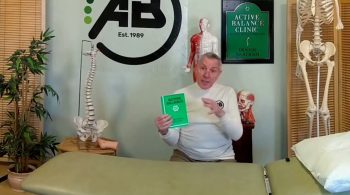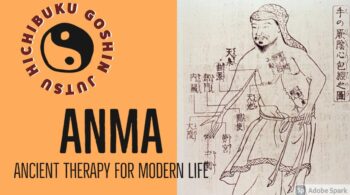History of Amatsu Therapy https://www.amatsu.info/
Amatsu therapy is a blend of modern research and ancient Japanese natural movement-orientated ‘hands-on’ therapeutic techniques dating back over 2,000 years. The ‘feeling’ and principles taught today directly derive from Dr. Hatsumi and the ancient school of Hichi Buku Goshin Jutsu Ryu. This is a school of the breathing and physical techniques of one of the ancient traditional healing arts of Japan. It translates as ‘The secret flower opening school for the defense of the self.’ The school’s ancient principles form the scrolls called the Tatara meaning ‘sky harbour’ or literally ‘divine residence and God’s port’.
These principles are a collaboration of martial arts, medicine, philosophy, strategy, and religion that have been practiced in Japan for over 2,000 years. Until recently the knowledge and skills were shared with only a handful of people in each generation, and have been passed down over the years in an unbroken chain. The present-day head of the Tatara is Dr. Masaaki Hatsumi of Noda City, Japan. Amatsu’s breakthrough in the West began in 1986 when Dennis Bartram first discovered Dr. Hatsumi’s work, and then in 1995 when Dennis, William Doolan, and Christopher Roworth made history as the first non-Japanese therapists to be taught the ancient healing principles of the Tatara by Dr. Hatsumi. They were all granted Menkyo Kaiden (full teaching rights) of the ancient school.
As a result of Dennis Bartram’s personal work and research, these teachings are now underpinned within a Western scientific framework and are available today as Amatsu therapy, which is taught by ATA-approved schools. For further information on Dennis please see – Dennis Bartram Masaaki Hatsumi (初見良昭 Hatsumi Masaaki) Masaaki Hatsumi is the 34th grandmaster of Togakure ryu and founder of the International Bujinkan Hombu Dojo. He was born on December 2, 1931, in Noda City, Chiba Prefecture, Japan where he graduated from Meiji University Literature Department, and later went on to receive his Doctor of Orthopedics degree from a medical school located in Yotsuya. It is documented that throughout his childhood Masaaki Hatsumi studied several popular martial arts. It was after teaching these martial arts to United States soldiers stationed in Japan he noticed that the large, strong build of the Americans gave them a natural advantage in battles.
This simple realization inspired his search for a different type of martial art; where those with equal skill truly were equals, even when they were not of equal build or strength. His search led to Toshitsugu Takamatsuhi’s discovery of the principles of ninjutsu and a martial artist named ????
who was an expert in this field? Dr. Hatsumi then reportedly spent 15 years studying these Ninjutsu principles as an apprentice with his new teacher until Toshitsugu Takamatsu passed away in 1972. From Takamatsu, he inherited the position of sōke (headmaster) of nine ryū (schools of martial arts). Dr. Hatsumi continues to teach these principles in his Dojo in Noda City, Japan. In addition to medicine and martial arts, Dr. Hatsumi is an accomplished artist of brush and ink in the Nihonga style.
His artwork has been exhibited at the Nagai Gallery of Tokyo and in Paris, France. Dr. Hatsumi has written numerous books and articles on philosophy and martial arts that have been translated into many languages. An accomplished actor and director of both movies and television, he starred in the TV series Jiraiya for four seasons. He has also served as a martial arts advisor to various films and television productions, including the James Bond movie You Only Live Twice. Dr. Hatsumi focuses his training of the Bujinkan on the ‘feeling’ behind his techniques or what he terms the ‘feeling’ of real situations.
While technical knowledge of an art is considered important, the direction of this feeling-based approach guides our practitioners. In addition, it is said many that the Bujinkan students do not participate in martial art tournaments because it is Hatsumi’s belief that martial arts are not about winning or losing but about surviving. Knowledge of art is considered important, and the direction of this feeling-based approach guides our practitioners. In addition, it is said many that the Bujinkan students do not participate in martial art tournaments because it is Hatsumi’s belief that martial arts are not about winning or losing but about surviving. Amatsu therapy, developed from the research of Dennis Bartram, introducing Dr.
Hatsumi’s movement principles, from an ancient martial/medical system into his clinical practice. The movement-initiated techniques allowed for a gentle noninvasive approach to manual physical therapy. Dennis explored the dynamics of both Osteopathy and Chiropractic research and underpinned by the science of Biotensegrity, to meld a safe and dynamic therapeutic approach. After ten years, in 1995, Dr. Hatsumi a Japanese osteopath acknowledged this work and granted him the teaching rights to an ancient traditional medicine school and personally tutored its progress up to date.
In 2000 Dennis was given a Bujinkan gold medal for his services to mankind. In 2003, Dr. Hatsumi granted Dennis an honorary doctorate in traditional Japanese medicine. This blend of East/West concepts influenced by Dr. Hatsumi’s approach became Amatsu, a manual therapy based on sound principles, allowing the practitioner to override or inhibit the structural and nerve entrapment.
By gently squeezing key points, in the spasmed tissue, and moving joints, gently, through movement patterns, the injured part can integrate with the body core, to repattern the injury and accelerate rehabilitation. This creates stability in the joint, while healing takes place naturally. Amatsu works with the whole body to recalibrate and connect its natural movement patterns that are interrupted or lost through injury.




